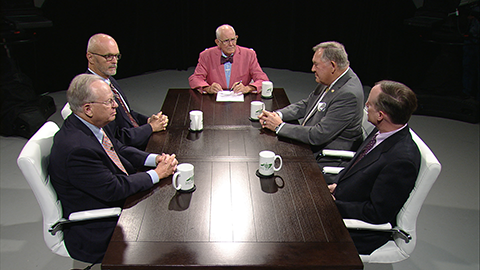We saw the long-term effects of violence in Northern Ireland: The U.S. can avoid the abyss
Published June 13, 2024
With the November 2024 elections drawing closer, many people have been discussing the specter of political violence. I recently joined a group of 25 faith and community leaders from across the United States on a trip to Northern Ireland focused on that same topic — by examining the aftermath of the 30-year violence there known as The Troubles. The trip was jointly sponsored by The Carter Center and Rethinking Conflict, a nonprofit working on conflict transformation, peace building and reconciliation.
During our meetings with various leaders of Northern Ireland, which included victims of the political violence, terrorism and bombings, our group got a glimpse into the abyss — the abyss of what a community looks like when it devolves into two armed camps, groups of people who have de-humanized each other, and then tries to pick up the pieces afterwards. The vivid images of violence, destruction, fear and trauma will long remain in my memory.

Rev. Dr. Gary Mason, a Methodist minister who founded Rethinking Conflict in 2015 and who organized most of the meetings for us, gave us perspective on the extent of this violence. With over 3,500 deaths and more than 47,000 people injured during The Troubles, in a country with a population of only 1.5 million, it would be equivalent to over 9 million casualties, with over 750,000 deaths, had it occurred at the same level in the US.
The Good Friday Agreement, signed on April 10, 1998, brought peace and compromise to a divided Northern Ireland. Those with whom we met showed deep gratitude for the sustained and cross-partisan role that the US played in bringing about this peace. President Clinton became the first sitting U.S. President to visit Northern Ireland in 1995, and he appointed Sen. George Mitchell of Maine to chair the peace talks.
My Spin by Tom Campbell
Before and after school
7:17 p.m. yesterday
Lessons learned from Hunt
December 25, 2025
Property tax reduction and reform
December 18, 2025
Is Berger the Grinch who stole Christmas?
December 11, 2025
Childhood then and now
December 4, 2025
Subscribe
Join our weekly newsletter and never miss out on new stories and promotions.
Mock Shows and Live Tapings Available

NC SPIN is proud to be able to bring its program to your location for an expanded “Mock Show” that discusses statewide issues that have a significant impact on your community.
Find out more >>






